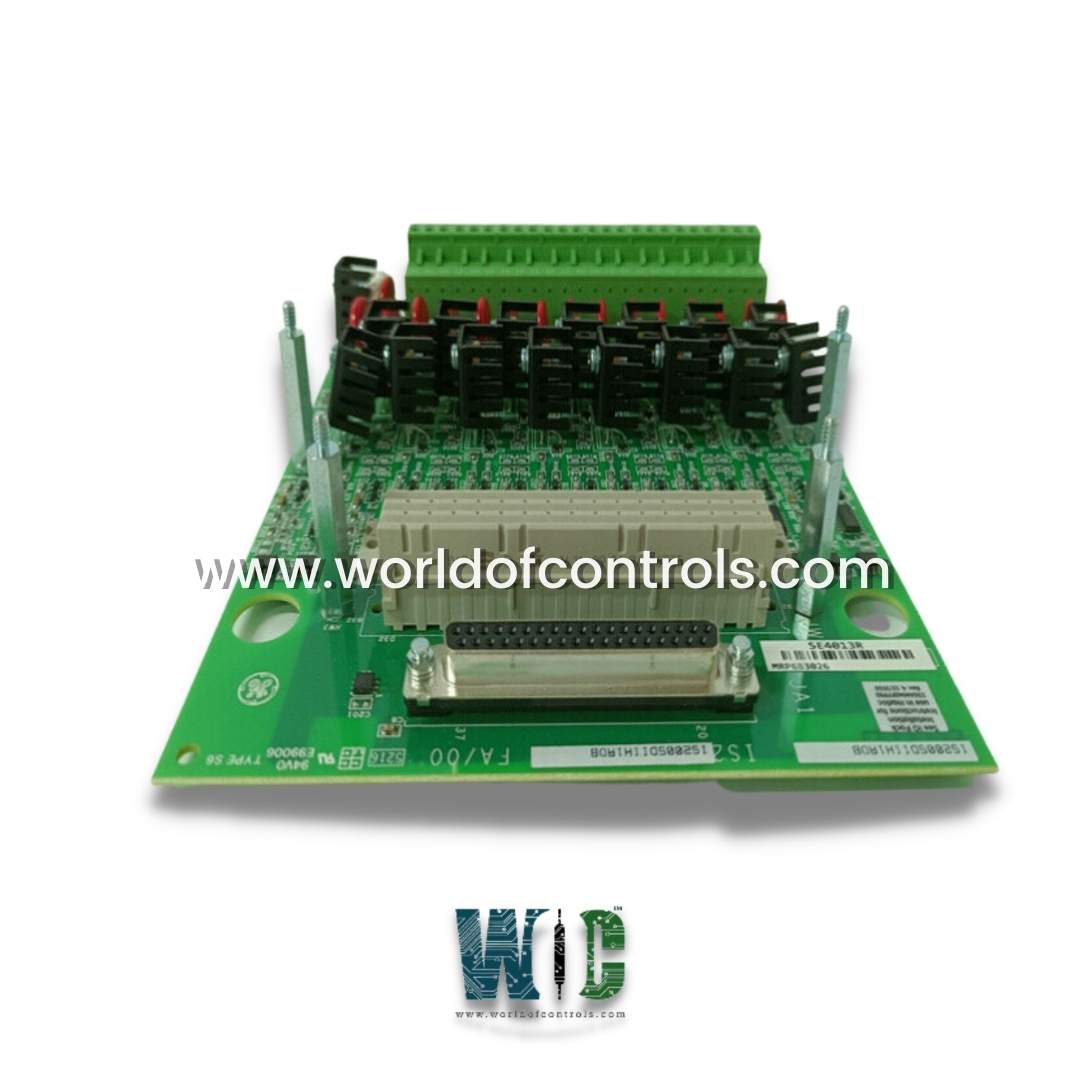
World Of Controls understands the criticality of your requirement and works towards reducing the lead time as much as possible.
IS230SDIIH2A - Simplex Contact Input with Point Isolation Terminal Board is available in stock which ships the same day.
IS230SDIIH2A - Simplex Contact Input with Point Isolation Terminal Board comes in UNUSED as well as REBUILT condition.
To avail our best deals for IS230SDIIH2A - Simplex Contact Input with Point Isolation Terminal Board, contact us and we will get back to you within 24 hours.
SPECIFICATIONS:
Part Number: IS230SDIIH2A
Manufacturer: General Electric
Series: Mark VIe
Product Type: Simplex Contact Input with Point Isolation Terminal Board
Number of channels: 16
Voltage Range: 14 to 32 V dc
Maximum Lead Resistance: 15 Ω
Outputs: 24 V dc
Mounting: DIN-rail mounting
Technology: Surface mount
Operating temperature: -30 to 65°C
Size: 15.9 cm high x 17.8 cm
Repair: 3-7 Day
Availability: In Stock
Weight: 2 lbs
Country of Origin: United States
Manual: GEH-6721L
FUNCTIONAL DESCRIPTION:
IS230SDIIH2A is a Simplex Contact Input with a Point Isolation Terminal Board manufactured and designed by General Electric as part of the Mark VIe Series used in GE Distributed Control Systems. The Contact Input with Point Isolation (SDII) terminal board provides 16-point isolated voltage detection circuits to sense a range of voltages across relay contacts, fuses, switches, and other contacts. IS200SDIIH1 has pluggable Euro-style box-type terminal blocks and a connector that accepts different option boards. Three terminals are provided for each contact input channel. Each channel can accept different voltage levels as follows: 24 V dc/ 48 V dc/ 125 V dc/ 250 V dc/ 115 V ac rms / 230 V ac rms. If PDII is used with SDII only, then all 16 channels are point-isolated.
Three groups of WDII option boards connect to SDII. If the option board WDII is connected, the point-isolated channels become group-isolated channels where the system wetting voltage is provided through WDII. WDII boards have an isolated voltage detector circuit similar to SDII to monitor the wetting voltage.
Using option board WDIIH1, all 16 channels can be system wetted with 24 V dc, 115 V ac rms, or 230 V ac rms. When using WDIIH1 each of the 16 channels can be individually set and configured as point isolated and each channel can accept a different voltage level as needed. A mix of point isolation and group isolation is possible in this configuration.
Using option board WDIIH2, all 16 channels can be system wetted with 48 V dc. When using WDIIH2, each of the 16 channels can be individually set and configured as point isolated and each channel can accept a different voltage level as needed. A mix of point isolation and group isolation is possible in this configuration.
Using option board WDIIH3, all 16 channels can only be system wetted with 125 V dc. With WDIIH3, there is no option provided to configure channels as point-isolated.
INSTALLATION:
The SDII and plastic insulator are attached to a sheet metal carrier that mounts onto the cabinet using screws. An option board if used, plugs onto SDII and is held in place with the help of four stand-offs and the fastener hardware. The contact inputs are wired directly to the terminal block, typically using #18 AWG wires. Shields should be terminated on a separate bracket.
OPERATION:
The SDII provides a sensing circuit, which converts the voltage present at the TB input to an isolated digital signal. Using the isolated signal, the firmware calculates the voltage present at the TB input. Based on the presence and absence of voltage at the TB input, it declares the status of contact as on or off. Each input is isolated from the others. If SDII is used without an optional board, all the inputs are point-isolated as well as system-isolated. If SDII is used with optional board WDIIH1, channels can be system wetted with 24 V dc / 115 V 50/60 Hz ac rms / 230 V 50/60 Hz ac rms based on the TB points used for field wire terminations and the channel configuration setting through the ToolboxST application. The frequency range for AC 50 Hz and 60 Hz is ±3 Hz. System wetting requires that the respective channel fuse be present on WDII. Removal of the fuse allows the use of the input as a point-isolated signal path.
WOC has the largest stock of GE Distributed Control System Replacement Parts. We can also supply unused and rebuilt backed-up with a warranty. Our team of experts is available round the clock to support your OEM needs. Our team of experts at WOC is happy to assist you with any of your automation requirements. For pricing and availability on any parts and repairs, kindly get in touch with our team by phone or email.
How does the simplex contact input interface with the terminal board?
The simplex contact input is connected to specific terminals on the isolation board. These terminals are designed to accept and process signals from the contact input while providing isolation from the rest of the system.
What are the benefits of using point isolation terminal boards?
Point isolation terminal boards enhance system reliability by containing faults to individual points, preventing them from affecting other parts of the system. They also simplify troubleshooting and maintenance.
Can multiple simplex contact inputs be connected to a single terminal board?
Yes, depending on the design and capacity of the terminal board, multiple simplex contact inputs can be connected. Each input should be appropriately isolated to avoid signal interference.